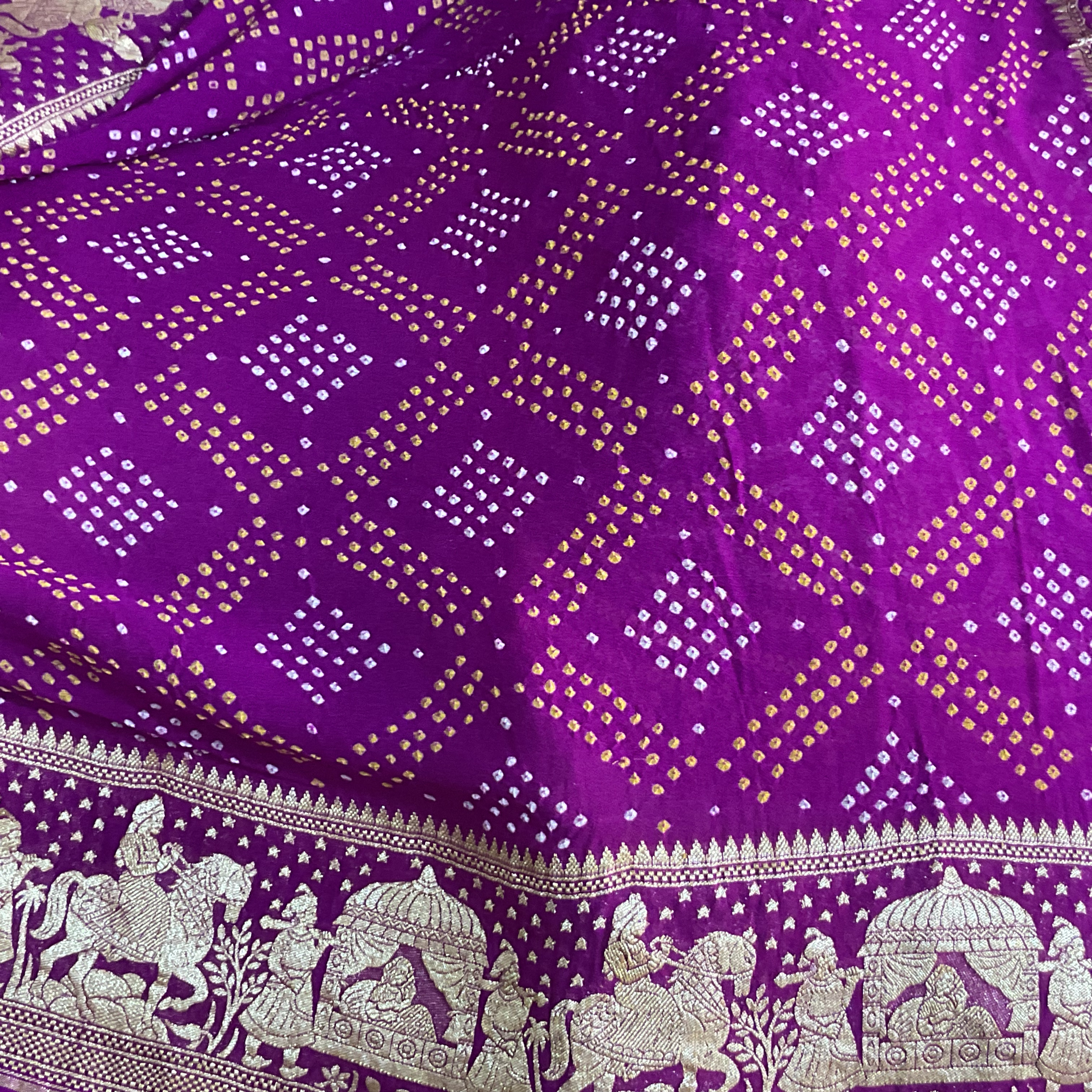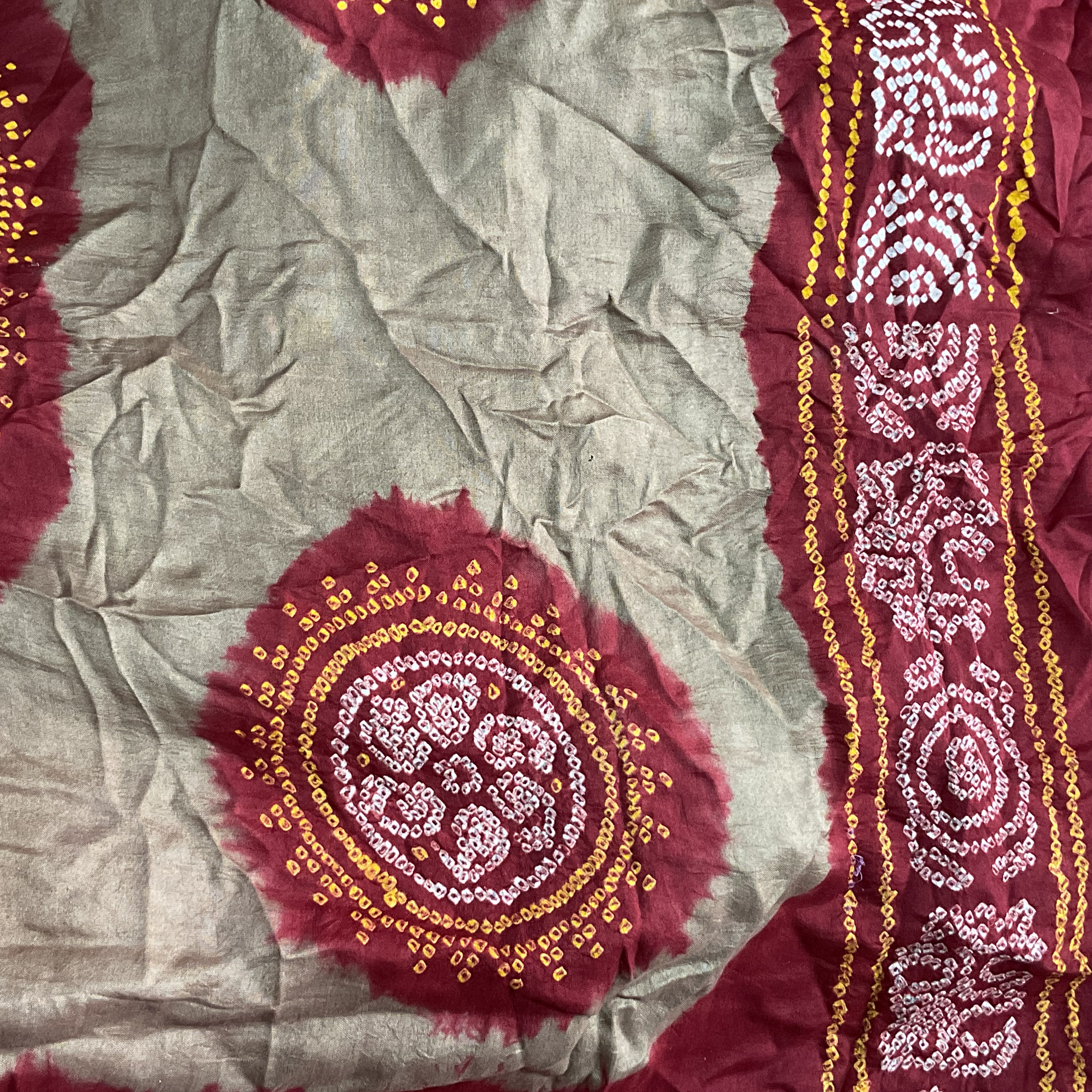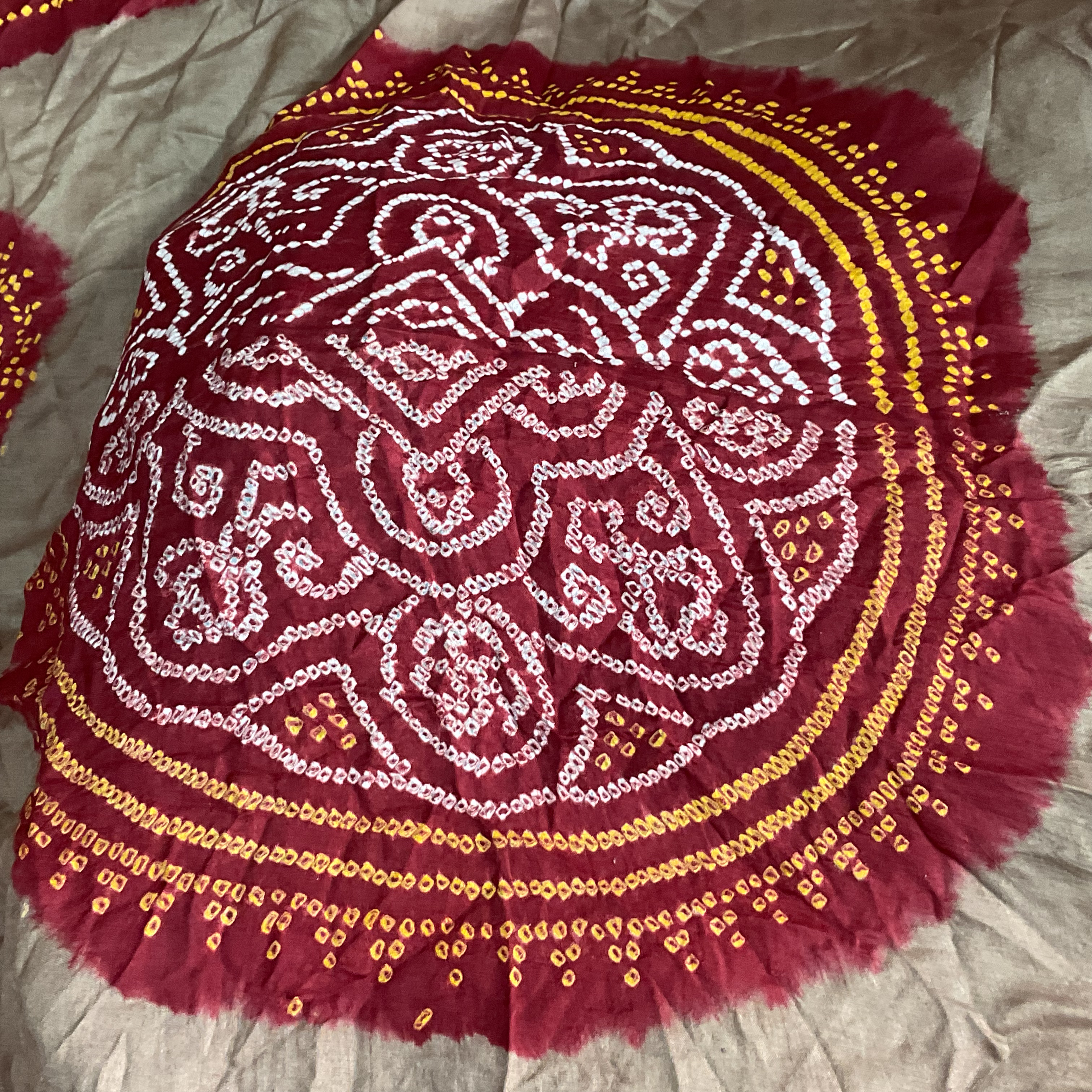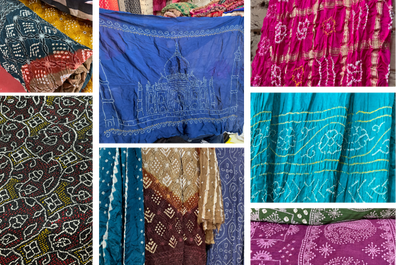Kutch Bandhani
Other Textiles Based Craft

History
Bandhani, dating back to the Indus Valley Civilization (4000 BC), is seen in Ajanta Cave paintings and referenced in Harshacharita (606–648 AD). Introduced to Kutch by the Khatris in the 12th century, it became a major export by the 18th century. Though natural dyes were replaced by chemicals post-1956 earthquake, Bandhani remains a vital part of Indian textile heritage.




Raw Materials and Tools
The raw materials used in Kutch Bandhani include natural fabrics like cotton, silk, georgette, and muslin, which serve as the base for dyeing. Traditional dyes were derived from natural sources such as madder, pomegranate, and indigo, though chemical dyes have become more common in modern times. The primary tools used in the process include cotton threads for tying the fabric, aari (hooked crochet tool) for intricate embroidery, and perforated sheets with chalk or charcoal powder for tracing designs. Wooden blocks are sometimes used for printing guidelines before tying.
Process
Kutch Bandhani is a traditional tie-dye technique involving washing, printing designs, and tying fabric with cotton threads. Dots are tied individually or in folds using two knot styles. After dyeing and drying, knots are opened to reveal intricate patterns, reflecting cultural heritage and skilled craftsmanship.
Design and Color
Bandhani showcases intricate motifs inspired by nature, mythology, and tradition. Floral designs symbolize beauty, while geometric patterns reflect harmony. Natural elements like vines and trees emphasize human-nature ties. Mythological figures add spiritual depth, and abstract patterns enhance aesthetics. Knots are grouped into Ekdali, Trikunti, and Chaubundi, forming patterns like Shikargah, Dungar-Shahi, Boond, and Laddu-Jalebi. Vibrant colors such as red, yellow, and blue carry cultural meaning, making Bandhani a vibrant expression of heritage and artistry.
Product Range
Gharchola, a prized Bandhani worn by Rajput brides, features red fabric with golden brocade grids and motifs like elephants and dolls. Kalghar, also red, has diamond grids for the Saat Phere. Panetar, a white sari with red Bandhani borders, complements Gharchola. Chandrakhoni showcases medallions and lace. Other styles include Mata ni Chundadi (religious offering), Phulwadi (floral saree), and Rumal (black headscarf with central medallion).
